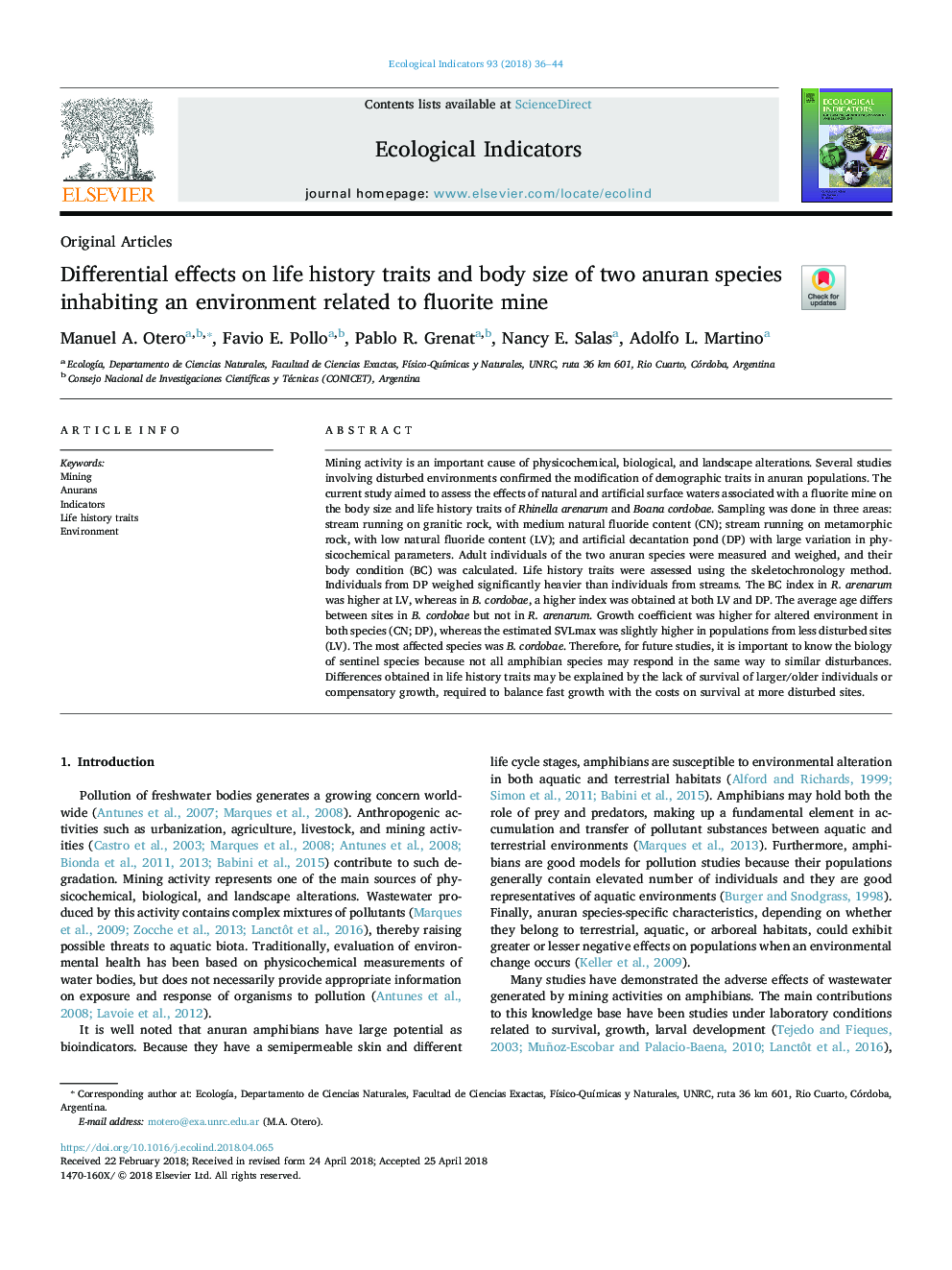| Article ID | Journal | Published Year | Pages | File Type |
|---|---|---|---|---|
| 8845089 | Ecological Indicators | 2018 | 9 Pages |
Abstract
Mining activity is an important cause of physicochemical, biological, and landscape alterations. Several studies involving disturbed environments confirmed the modification of demographic traits in anuran populations. The current study aimed to assess the effects of natural and artificial surface waters associated with a fluorite mine on the body size and life history traits of Rhinella arenarum and Boana cordobae. Sampling was done in three areas: stream running on granitic rock, with medium natural fluoride content (CN); stream running on metamorphic rock, with low natural fluoride content (LV); and artificial decantation pond (DP) with large variation in physicochemical parameters. Adult individuals of the two anuran species were measured and weighed, and their body condition (BC) was calculated. Life history traits were assessed using the skeletochronology method. Individuals from DP weighed significantly heavier than individuals from streams. The BC index in R. arenarum was higher at LV, whereas in B. cordobae, a higher index was obtained at both LV and DP. The average age differs between sites in B. cordobae but not in R. arenarum. Growth coefficient was higher for altered environment in both species (CN; DP), whereas the estimated SVLmax was slightly higher in populations from less disturbed sites (LV). The most affected species was B. cordobae. Therefore, for future studies, it is important to know the biology of sentinel species because not all amphibian species may respond in the same way to similar disturbances. Differences obtained in life history traits may be explained by the lack of survival of larger/older individuals or compensatory growth, required to balance fast growth with the costs on survival at more disturbed sites.
Related Topics
Life Sciences
Agricultural and Biological Sciences
Ecology, Evolution, Behavior and Systematics
Authors
Manuel A. Otero, Favio E. Pollo, Pablo R. Grenat, Nancy E. Salas, Adolfo L. Martino,
